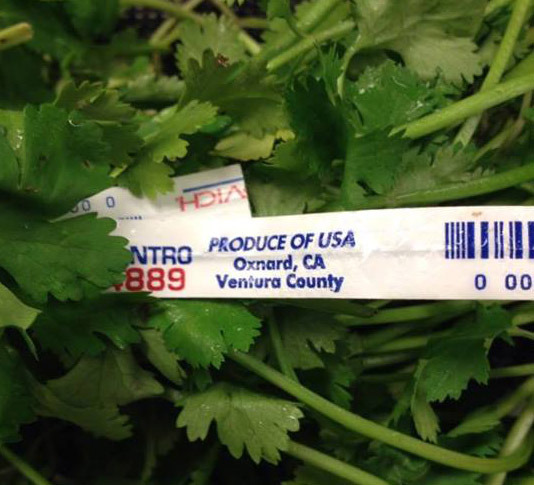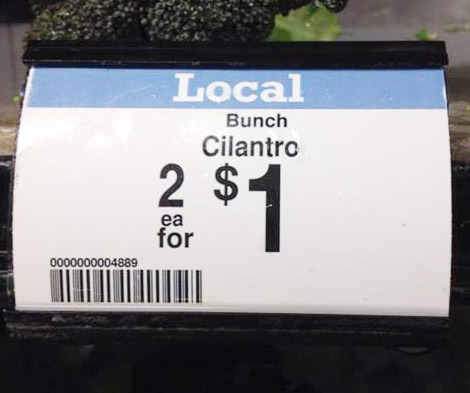Cilantro Is Not Local To Ohio When Grown In California
 It’s not that Nancy expects all of the produce sold at her local Kroger to be grown locally. That’s not possible, especially if you like things that can’t be grown in Ohio. For example: bananas. She does expect that when the company labels produce as locally grown, that it is. The store has some trouble with this concept.
It’s not that Nancy expects all of the produce sold at her local Kroger to be grown locally. That’s not possible, especially if you like things that can’t be grown in Ohio. For example: bananas. She does expect that when the company labels produce as locally grown, that it is. The store has some trouble with this concept.
“The first time the cilantro was from California,” she wrote. “The second time it was from Texas.” She brought the discrepancy to the attention of store management. Their response was, approximately, “oopsie!”

Not everything grows year-round in every climate, and we shouldn’t expect it to. We shouldn’t expect that words like “local” have no meaning once they’re printed on a shelf tag.
(The shadows made the cilantro too dark to see, but when you crank up the brightness, it is there. It was below the shelf tag.)
UPDATE: A Kroger employee (who we’ll keep anonymous because he or she doesn’t speak for the company in an official capacity) explained to us how this sign probably came into existence.
The signs are created in store, for produce items they’re given 4 different sign stocks: “Local,” “Organic,” “Sale Price,” and “Low Price.” The person who created that particular sign most likely made an error, as opposed to intentionally misleading the customers. They probably made several different signs at the same time and neglected to use the proper sign stock/template.
To be clear, we didn’t ever suspect this sign of being intentionally misleading. We’ve learned to never suspect a vast conspiracy when simple incompetence could be to blame.
We contacted Kroger corporate to find out what their definition of “local” is–when we hear something back, we’ll update this post. Update: Kroger answered.
Want more consumer news? Visit our parent organization, Consumer Reports, for the latest on scams, recalls, and other consumer issues.

